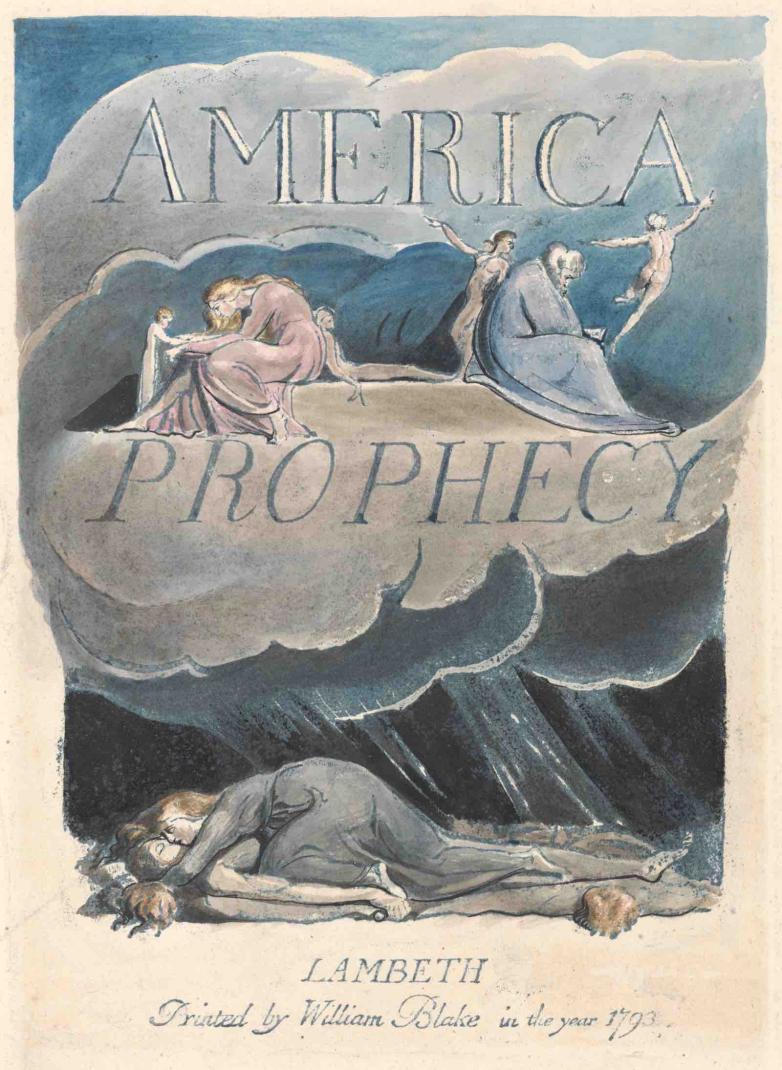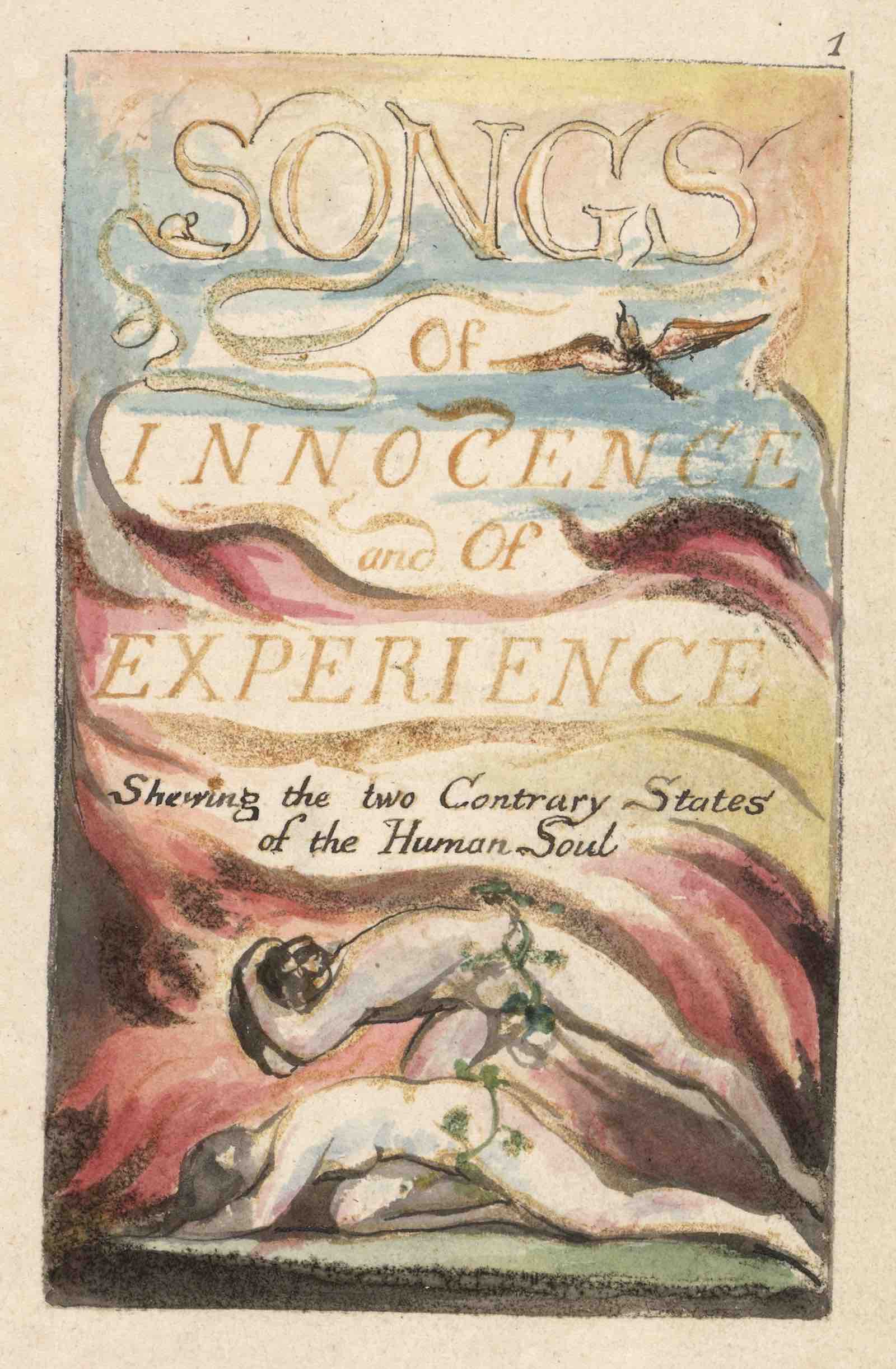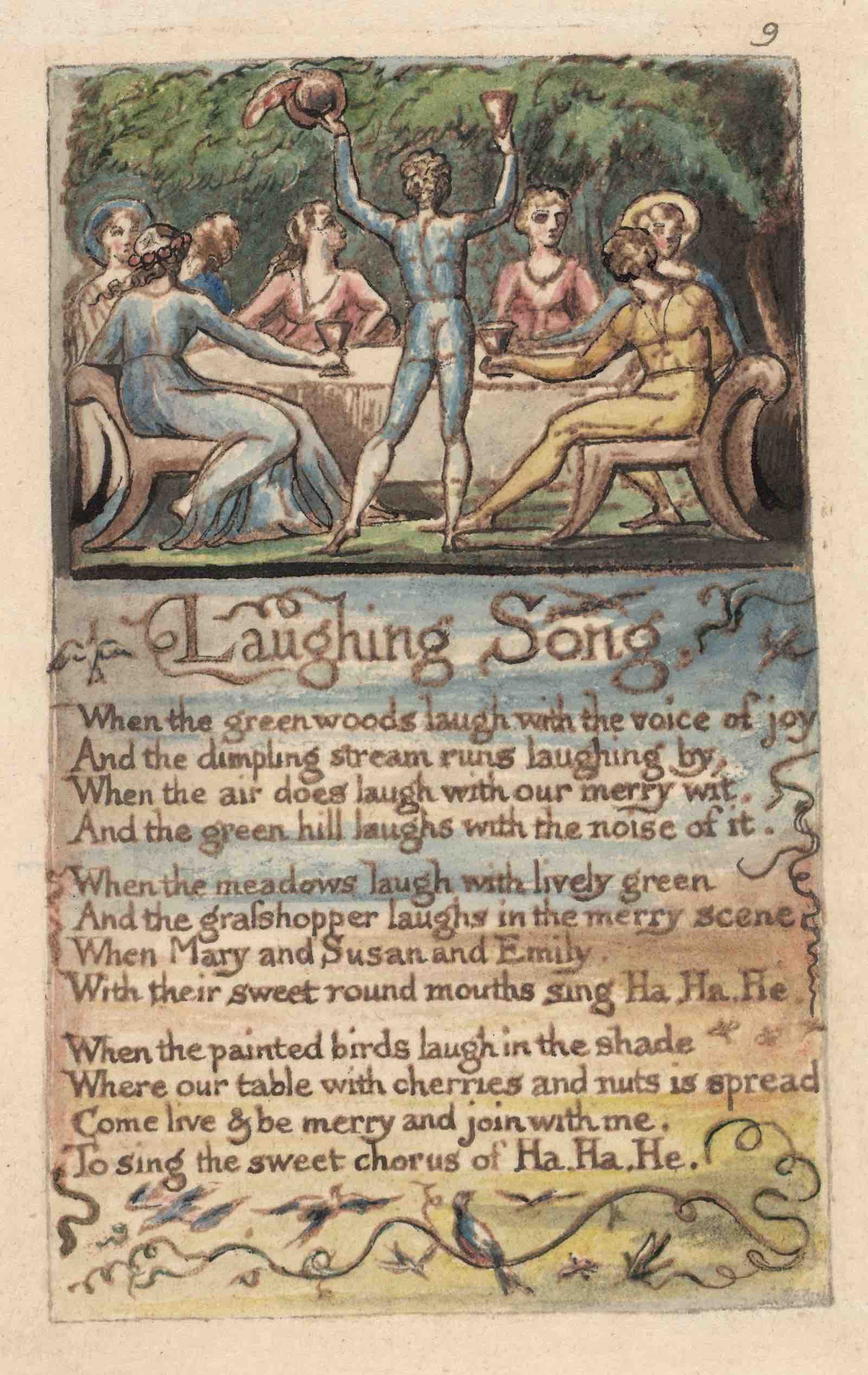Blake often represented figures from the Bible and classical Greek and Roman mythology, along with allegorical characters from his own imagined universe that personified a myriad of emotions, behaviors, and concepts. A few invented figures that appear in his work include “Albion,” who generally represents England and fallen humankind, “Urizen” who often depicts tyranny and oppression, and “Orc” who embodies defiance and revolution.
“Blake employed innovative graphic techniques to combine poetry and images, often using his own highly allegorical characters to respond to the historic events of the time in a veiled manner,” said Edina Adam, assistant curator at the Getty Museum. “By employing his mythology to comment on revolutions, wars, political and economic repression, and social unrest, he was cleverly able to avoid persecution.”
Later in his career, Blake enjoyed the patronage of a small group of well-off, educated individuals. His most significant patron was the civil servant Thomas Butts, who allowed Blake to retain his artistic freedom while producing over 80 Biblical watercolors for him. Possibly intended as illustrated inserts for a large Bible, five pages from this series are featured in the exhibition, including The Death of a Virgin.
While the Bible was an endless source of inspiration for Blake’s work, his views on religion were complex and at times contradictory. He disagreed with the idea of God as an omnipotent patriarch or vengeful deity. Rather, he identified as a spiritualist and claimed to have experienced frequent visions. Blake’s best-known tempera work, The Ghost of a Flea, is the result of a séance-like vision. It has not been exhibited outside the U.K. for decades and will appear in the Getty exhibition alongside a key preliminary sketch.
“William Blake’s deep spirituality, questioning nature, and vivid imagination particularly resonated with poets and musicians of the 1960s and 1970s such as Allen Ginsberg, Patti Smith, and Bob Dylan. Yet Blake’s work continues to pop up in many unexpected places too, and it feels eternally relevant,” said Julian Brooks, senior curator of drawings at the Getty Museum. “We hope visitors who enter his visionary world through this exhibition will leave feeling empowered to explore the boundaries of what can be imagined.”



















